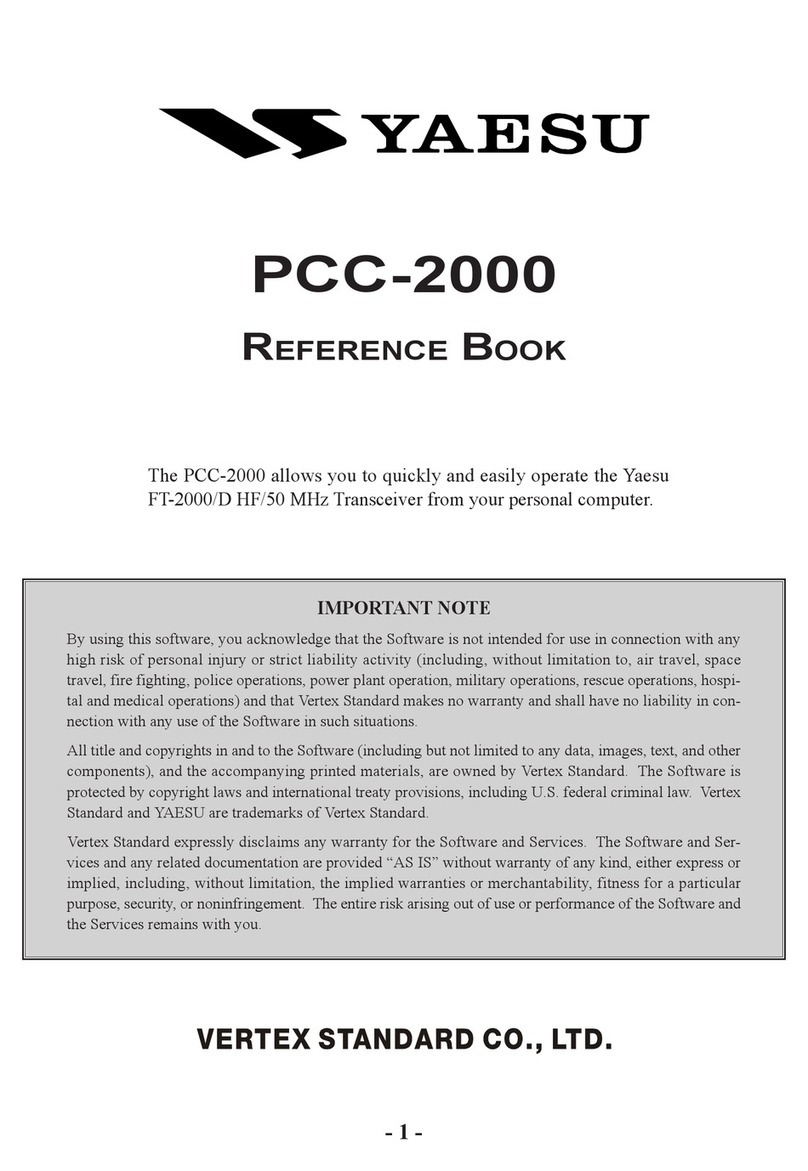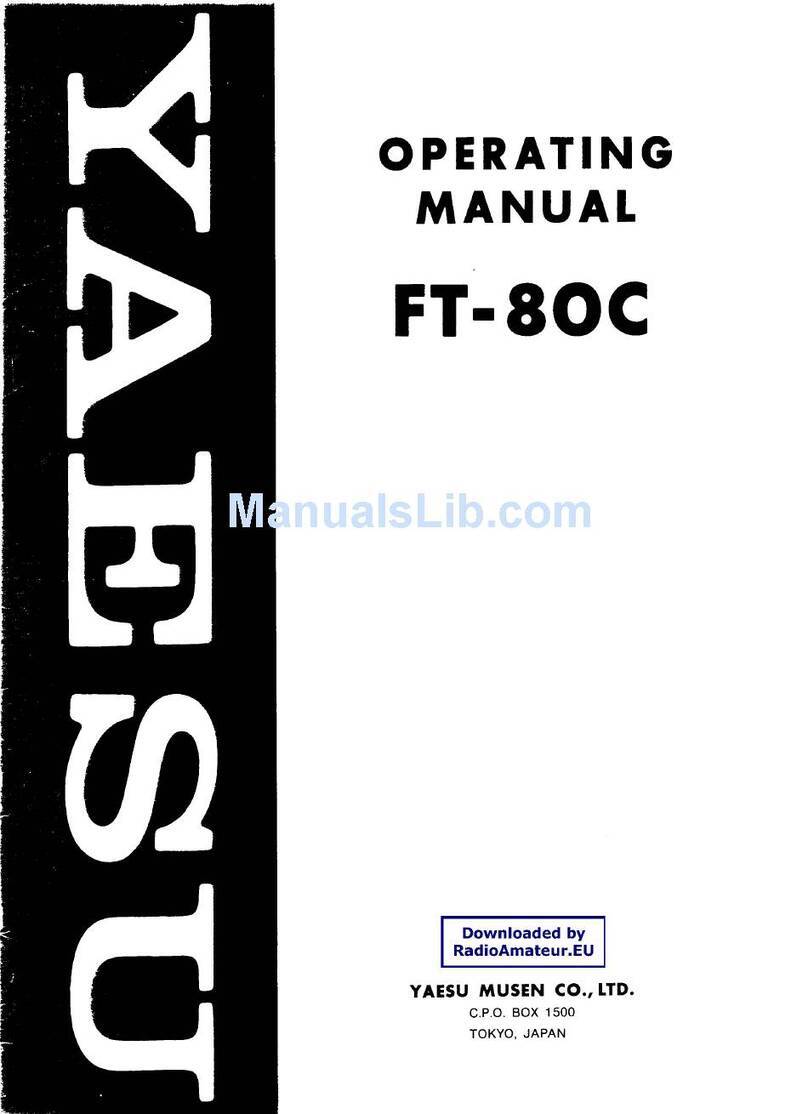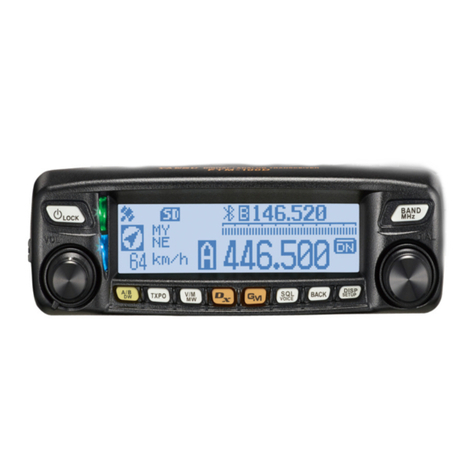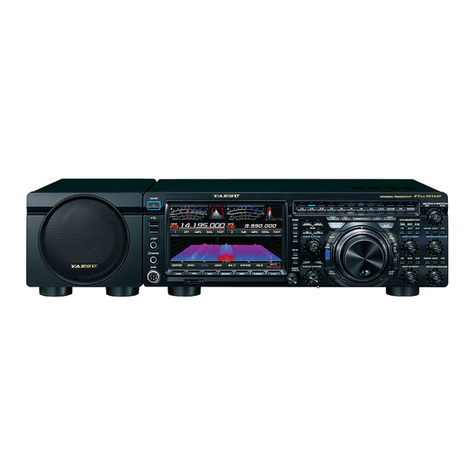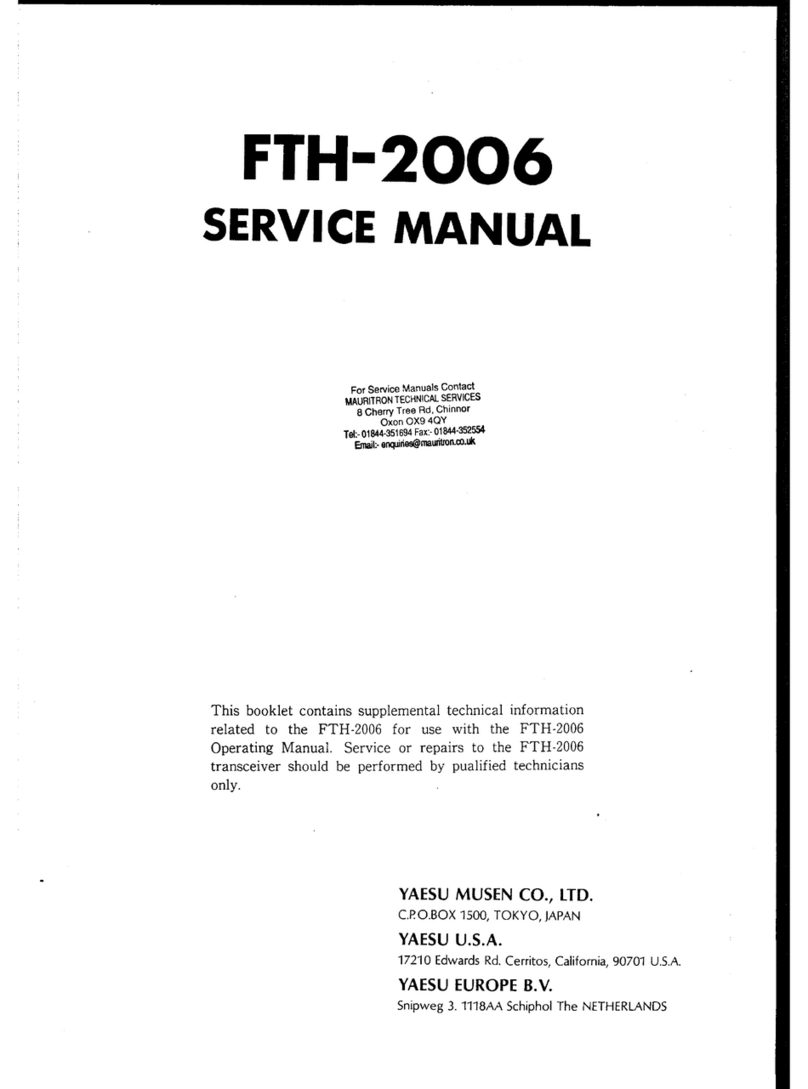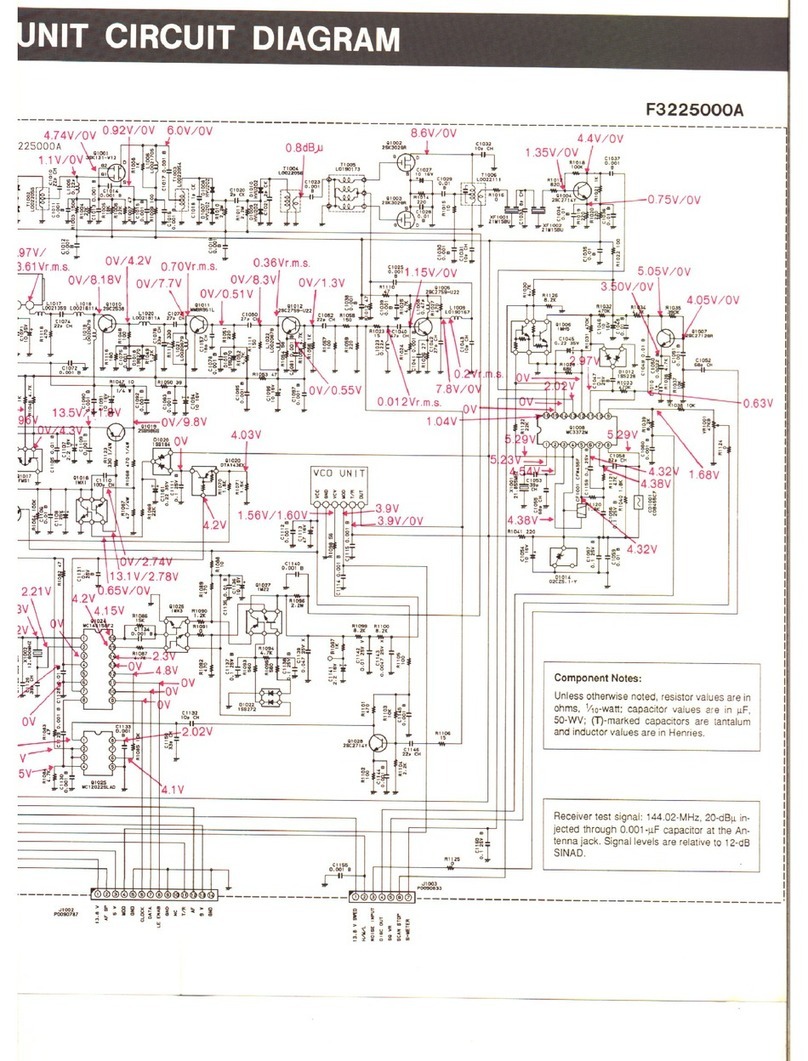
Contents
General Description ............................1
Specifications.......................................2
Accessories & Options.........................3
Front Panel Controls and Switches.....4
Microphone Switches ..........................6
Rear Panel Connectors........................7
Installation...........................................8
PreliminaryInspection...................................... 8
InstallationTips ............................................... 8
SafetyInformation ........................................... 8
RF Field Exposure Information ......................... 9
AntennaConsiderations .................................... 9
MobileInstallation ......................................... 11
BaseStationInstallation ................................. 13
Operation ..........................................15
BasicOperation/Reception.............................. 15
Power ON/OFF.......................................... 15
Supply Voltage Display.............................. 15
Adjusting the Volume and Squelch............... 15
Lock Feature............................................... 16
Keypad Beeper ........................................... 16
Display Brightness ...................................... 17
Tuning: The “Dial” (VFO) Mode ................. 17
Channel Step Selection ................................ 17
Direct Keypad Frequency Entry
(MH-36B6J Microphone) 18
Transmission ................................................. 19
DTMF Keypad............................................ 19
1750 Hz Tone Call ...................................... 19
Power Output Setting .................................. 20
PTT Locking............................................... 20
Transmitter Thermal Protection Sensor ......... 21
RepeaterOperation ........................................ 22
Repeater Splits ............................................ 22
ToneSquelchModes ...................................... 25
CTCSS
(Continuous Tone Coded Squelch System).25
DCS (Digital Code Squelch) ........................ 25
CTCSS/DCS Selections using
Programmable Microphone Key... 27
CTCSS Tone Search Scanning ..................... 27
DCS Tone Search Scanning ......................... 28
DCS Code Inversion.................................... 28
CTCSS Bell Paging ..................................... 29
DTMFAutodialer Operation ........................... 30
Memory System Operation ...............32
MemoryStorage ............................................ 32
ToAppendanAlpha-Numeric
Label to a Memory: ............ 32
RecallingMemories ....................................... 33
Memory Recall from MH-36B6J Microphone .... 33
To Turn on the Alpha-Numeric
Memory Name Display:..... 33
HomeChannelMemory ................................. 34
MemoryOffsetTuning ................................... 34
Memory-OnlyMode ...................................... 35
Deleting Memories ......................................... 35
Scanning ............................................36
BasicScannerOperation................................. 36
Scan-ResumeOptions .................................... 36
MemorySkipScanning(MRMode)................ 37
TemporaryMemorySkip ............................... 37
ProgrammableBand-ScanLimits .................... 38
SmartSearch Operation .................................. 39
PriorityChannelMonitoring ........................... 40
PriorityRevertMode ...................................... 41
ARTS
TM
:AutoRangeTranspondSystem ......
42
ARTSBasicOperation ................................... 42
ARTS Modes ................................................. 43
CW ID (Morse Identifier) Set up ..................... 43
Packet Operation ..............................44
Miscellaneous Settings ......................45
Time-OutTimer ............................................. 45
AutomaticPower-Off ..................................... 45
FM Bandwidth & Mic Gain Control ................ 46
ProgrammableMicrophoneKeys(ACC/P1/P2) 47
Resetting the CPU .............................48
Reset allM
ENU
settings: .................................. 48
CPUmasterresetforallmemories
andM
ENU
settings: ..... 48
Transceiver Cloning ..........................49
Menu System .....................................50
MenuSelectionSummary ............................... 50
MenuSelectionDetails ................................... 51



